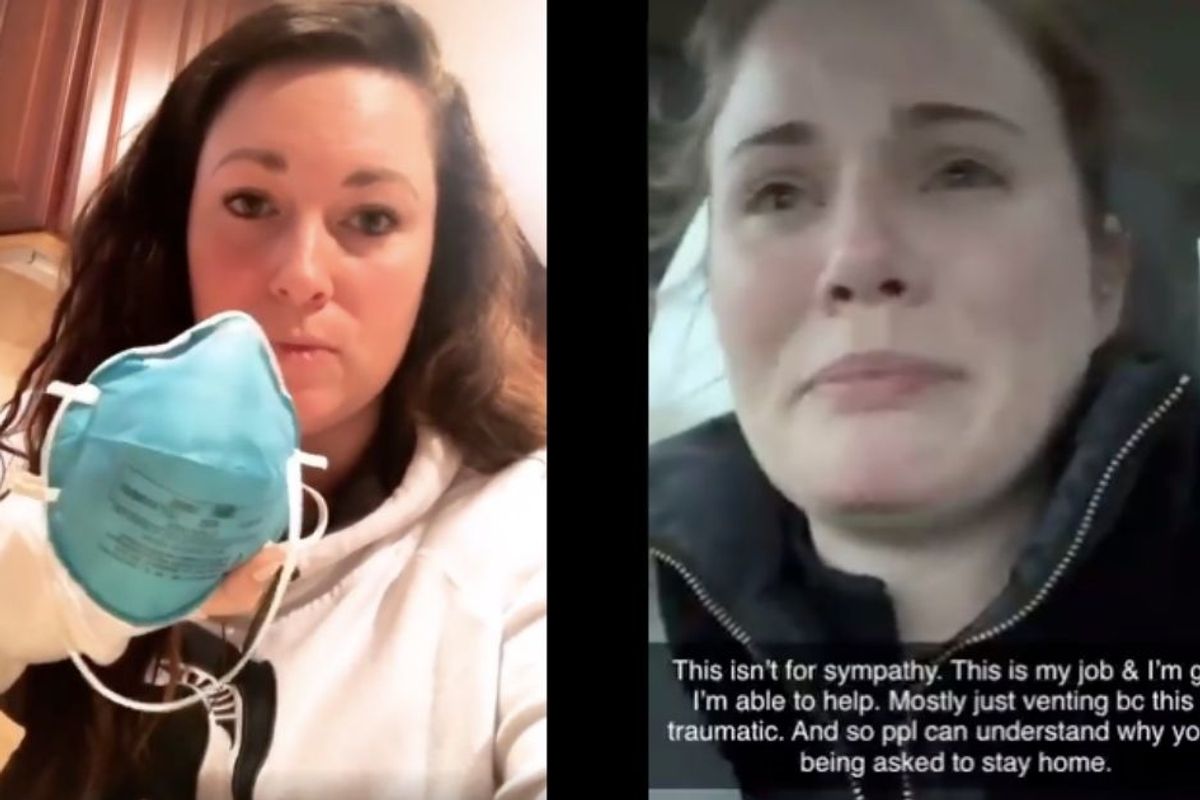Nurses on America's front line are begging for our help. We owe it to them to listen.

A few weeks ago, we shared a doctor's description of his hospital in Italy after the coronavirus had hit them hard. His words were sobering and his account harrowing—but at that point such dire circumstances were still half a world away.
We knew it was only a matter of time before a surge in cases and hospitalizations started hitting the U.S., and now we're getting a taste of what that looks like from the people on the front line.
Healthcare workers have sounded the alarm on what COVID-19 looks like in the ICU, on their woeful lack of PPE (personal protective equipment), and on the fear and frustration they feel when they see people not adhering to social distancing rules. If you need an incentive to stay at home as much as possible and to avoid interacting in person with others, these nurses' pleas ought to do it.
A nurse in Southeast Michigan shared her thoughts on video after coming off a 13-hour shift at the hospital where she treated COVID-19 patients on ventilators in the ICU.
"I don't know what the f*ck just happened the past 13 hours," she began. "Honestly, you guys, I felt like I was working in a war zone."
After describing what it's like to deal with a medical crisis with limited supplies and overwhelmed team members, she said, "I'm already breaking, so for f*ck's sake, please take this seriously."
Another nurse wrote a post on Facebook about her night at work last week, where her boss was crying, nurses were breaking down, and they all went to the hospital chapel together to pray. "I ask myself how are we going to survive this?" she wrote. "I've never seen anything like it."
Another Michigan ER nurse shared a video on Instagram describing one night in her hospital when they were running out of everything—even Tylenol.
Mary MacDonald took a shift at the Southfield campus of Ascension Providence Hospital and was blown away by what she experienced. "If you would have asked me ten-plus days ago if I thought that this was going to get as bad as it was, I would have told you no. I mean, you heard the rumors and you saw the trends, but until you see it first hand you just have no idea...it's truly frightening."
The bottom-line message from all of these front line workers is "STAY HOME." This virus is highly contagious, and It's not worth the risk to make an extra trip to the store or let your kid see a friend because they're bored or lonely. Stay at home, even if your area hasn't been hit hard yet. Stay at home, even if you think it's safe because your hospitals are still in the calm before the storm.
For the sake of our healthcare workers' health and well-being, as well as everyone else's, we all need to do our part to slow the spread, flatten the curve, and keep our hospitals from getting overrun with patients. People's lives literally depend on it, and we owe it to these medical workers to heed their warnings.
- An ER doctor in New York's COVID-19 hotbed shares what life is like ... ›
- A doctor in the heart of Italy's outbreak shares what life is like in the ... ›
- We owe a huge thanks to the heroes on the front line of the ... ›
- After grueling hospital shifts, nurses head to the front line of protests to offer aid - Upworthy ›
- How one nurse made sure her patients were never truly alone ›

